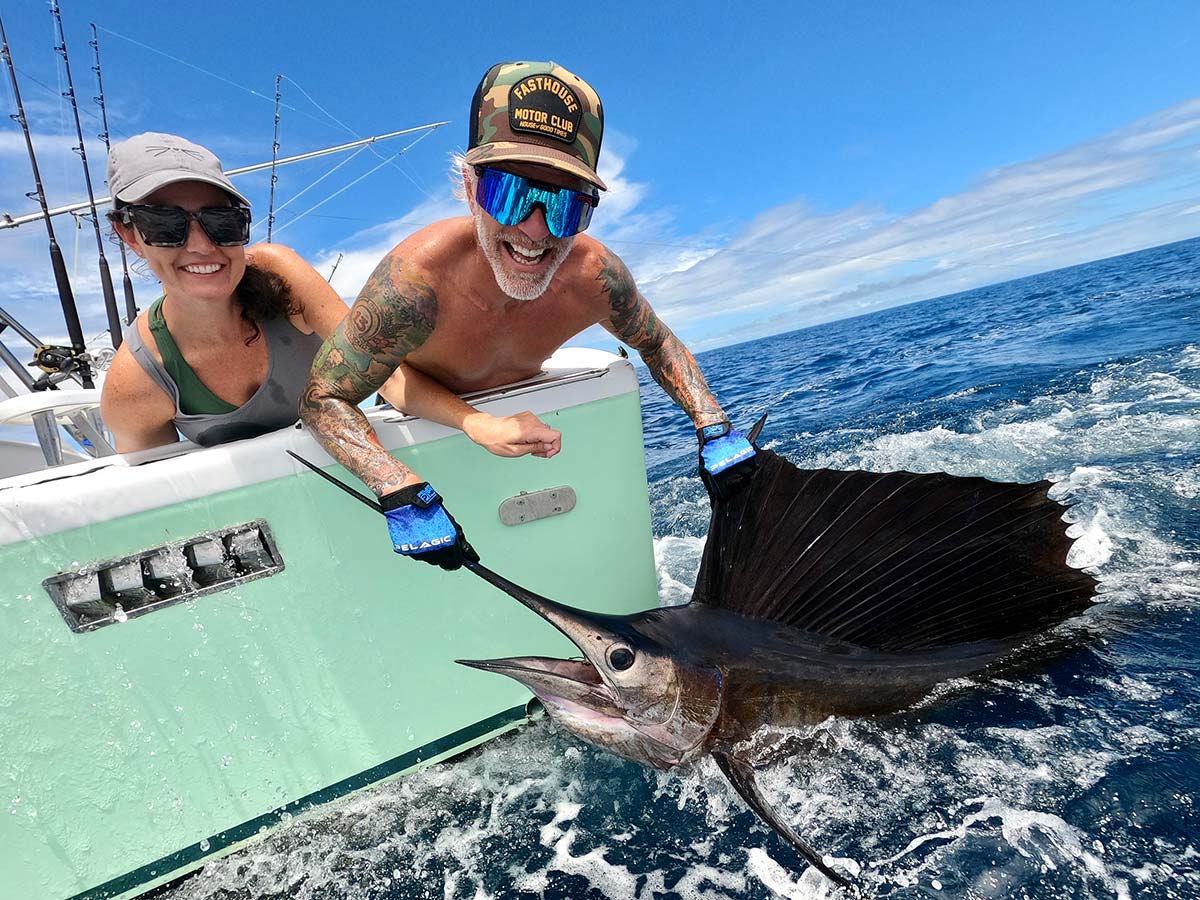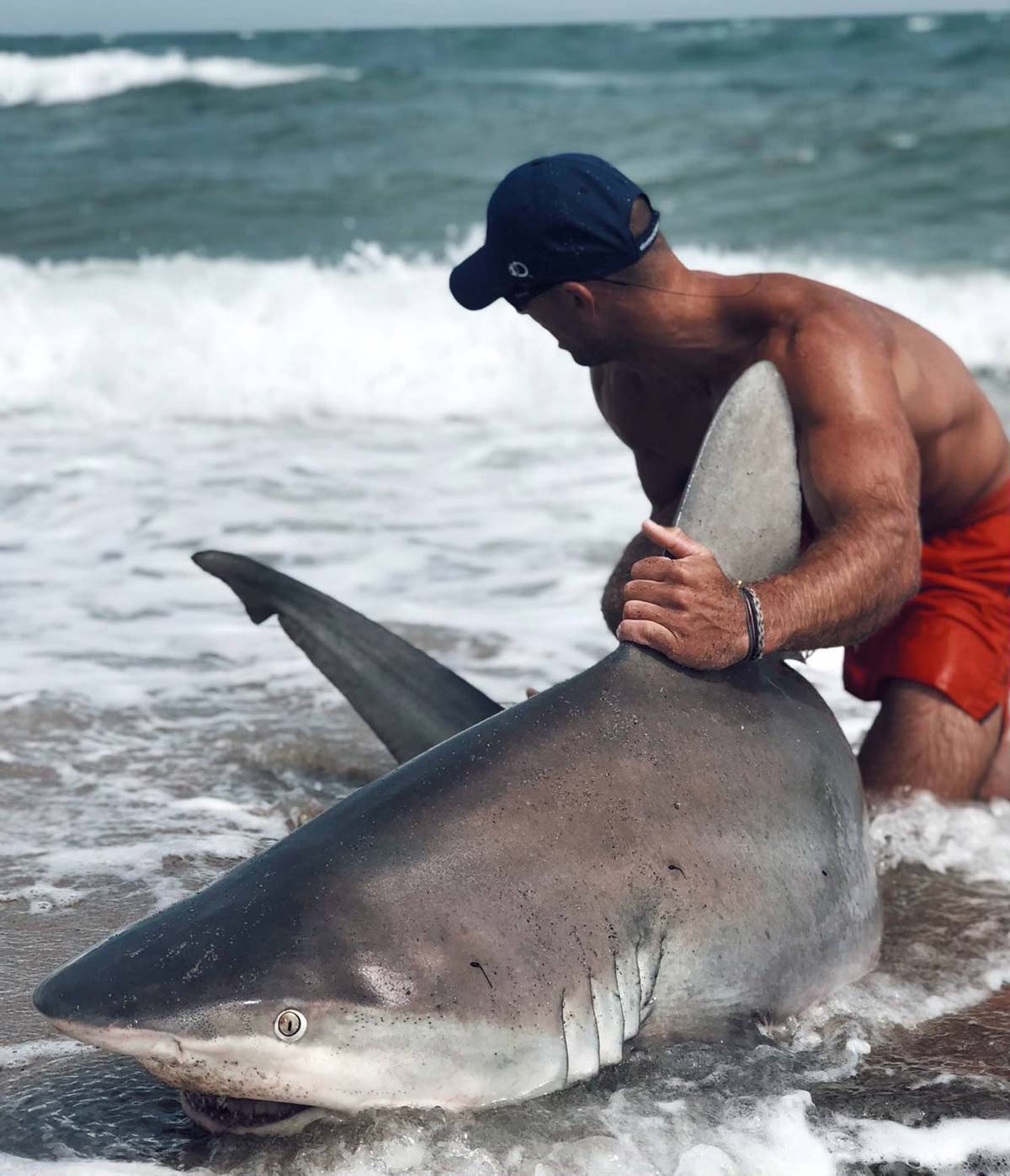
The evolutionary track of any angler includes key benchmarks and plateaus.
My idols as a youth were wealthy anglers who detailed their worldwide adventures in books replete with photos of giant fish. I could only dream that I’d someday have enough money to accomplish the angling feats of pioneers such as Zane Grey, Van Campen Heilner and S. Kip Farrington Jr. The wealth never developed, but my outdoor writing sideline plus a lot of good fishing fortune allowed me to duplicate many of their great adventures.
Yet, I set my shorter goals at reasonable quests such as advancing from tiny fish on a bamboo pole to catching a 10-pound fish (which turned out to be a skate in the Jones Beach surf), with the long-term goal of becoming a “big game” fisherman by breaking the 100-pound mark. That seemed to be a massive hurdle at the time – and it still requires enough effort that I suspect most anglers never do so even though the opportunities are now well-documented and can often be accomplished at minimal expense, even from shore.
The rules of this effort are up to you, with International Game Fish Association (IGFA) standards a starting point. Catching that 100-pounder unaided from hook-up to leadering or gaffing is basic – though there’s no need to worry about whether your leader is an inch too long or someone touches your rod. Such obvious non-sporting techniques as electric reels and cranking on a rig in a rod holder as in the commercial tuna fishery can’t be justified, but just about everything else is okay. Even having someone take your rod to get it out of a tangle or under an anchor line shouldn’t distract from winning a legitimate fight.
Species Of Interest
Surprisingly, there are lots of fish which can grow to over 100 pounds. Most obvious are most of the billfish and sharks, along with many rays, tunas and even such freshwater species as sturgeon, catfish and paddlefish. Halibut are a target in both the Atlantic and Pacific versions. The Atlantic species has declined to the point that it’s hard to target, though a 90-pounder was recently caught on the Seacoast Lady. On the other hand, 100-pound Pacific halibut remain a fairly common goal in Alaska.
A relatively routine trip to the Florida Keys may provide the best shot at a 100-pounder as tarpon that size are relatively routine around the Keys bridges during the spring run from about April to June – you can even catch them on the fly. Live mullet and crabs are the usual offerings, and the success rate is fairly high on guided trips out of marinas such as Bud and Mary’s in Islamorada. It’s also possible to hook 100-pounders on your own from Keys bridges at night. However, the odds of actually catching them aren’t good. Smaller tarpon are a legitimate target, but the biggest tarpon usually can’t be stopped.
Though there are historical records of commercially caught striped bass exceeding 100 pounds, I doubt that we’ll see such stripers again due to all the pressure on the species – even though such specimens are now protected. As with all other species, there’s no need to weigh your fish as using the formula (length to fork of tail times girth squared, divided by 800) will be sufficient for your purposes. Don’t expect anyone to believe you about a giant striper without taking length and girth measurements before release. Even a photo isn’t much proof as angles can make a big difference. I always carry a cloth tape in my back pocket which makes it easy to get the girth measurement.
Talking About Sharking
Growing up on the south shore of Long Island, my best bet for a 100-pounder seemed to be the growing sport of sharking that I was reading about regularly in Frank Keating’s Long Island Press outdoors column. Yet, there was no Fisherman magazine in those days to provide detailed information about a fishery in those days, and I had neither the gear nor the means of getting involved. I don’t remember how I met Ward Cunningham, but he had a cabin boat sailing out of Jones Inlet and invited me to join him on a weekend trip.
There wasn’t much to early sharking; just run about 10 miles offshore to about 100 feet, and set up an all-day drift while using a ladle to create a chum slick with ground bunker mixed into a large barrel. Ward had heard that sharks are attracted by floating newspaper, so he also brought along a Sunday N.Y. Times that was distributed page by page into the slick. He didn’t take the next step to see if sharks would prefer reading a tabloid like the Daily News.
Sharking is a waiting game, and I had plenty of time to worry about how I’d do trying to handle a 100-pound fish when I’d never hooked anything strong enough to pull drag off a reel. I had transformed myself from a kid who couldn’t do a single push-up during my first day of gym class at Mepham H.S. to doing 100 in a row by practicing at home every night, and then taking up weightlifting. Yet, battling a big fish on tackle heavier than I’d ever used still seemed like a formidable task. Fortunately, I passed that opportunity with a blue shark over 100 pounds, and never had another doubt about being up to the task regardless of fish size or the length of the fight.
Blue sharks aren’t great fighters, or worth keeping for food, but are a good first big gamefish due to their ready availability not too far from shore in the spring. Those sharks arrive while offshore waters are still chilly in April, and by June are usually so abundant that a beginner can make lots of mistakes with no harm done – and on relatively light tackle. Most will probably be under 100 pounds, but there are almost always larger ones mixed in — plus the shot at an early-arriving mako.
There’s no need to bring them in for weighing. If you’re fishing from a charter boat, the captain can give you a reasonable estimate of size. The National Marine Fisheries Service estimates that the average 100-pound blue is about 76 inches in body length from snout to the fork of the tail. That’s the way sharks are measured, and the minimum length for most of those which aren’t protected is 54 inches. The estimated 100-pound size is 64 inches for makos, 62 inches for sandbars (browns), and 66 inches for tigers. Google NOAA Fisheries to check updated regulations.

Near Shore Big Game
The growing abundance of bunker (menhaden or pogies) provides a perfect opportunity for small boat anglers to catch a very big game shark that’s also good eating. Threshers hang around bunker schools which are often not far from shore. I’ve even seen threshers in the mouth of Shark River at the Jersey Shore. Tackle with lots of capacity for 80-pound braid will give you a good chance at those unique sharks which weren’t available to us in the early days of NY/NJ Bight sharking. The 100-pound estimate is at 54 inches of body length.
Those willing to put the time in should be able to break the 100-pound mark from shore, but they may have to go through many “shorts” in order to do so. The same surf waters populated by swimmers during the day are likely to produce sharks from evening on through the night, Just keep in mind that most will be smaller sandbars and sand tigers which are also protected. In addition, those sharks frequent the bay waters on the other side of the marshes.
Most of these sharks can be caught on standard surfcasting tackle with wire terminal gear which can be purchased at coastal tackle shops. Bunkers are a readily available bait. Smooth and spiny dogfish may be a problem, but there’s also a chance at catching a 100-pound ray among all the small ones. Sand tigers are more of a southern species, being particularly abundant in Delaware Bay, but seem to be moving north in recent years.
Catching big sharks from the beach has long been a standard at Hatteras, NC where beach buggies are rigged with big game gear that can handle the largest sharks. Anglers there have also come up with methods of getting big baits out over the bar to prime shark territory.
At Home & Road Games
Anglers without boats may find it best to catch their 100-pounder from a party boat. Indeed, that’s routine in California as huge, comfortable party boats out of San Diego make long runs south to Baja for big tuna along with many other species. Not only are 100-pound yellowfin common, but they’re not even particularly noteworthy. Capt. Frank LoPreste used to have a party at his home each year for fares on his Royal Polaris who were able to boat a 200-pounder! During a “hot rail” bite, hooked tuna run in all directions and professional mates take rods from customers to run them around the boat and under the anchor while holding expensive PENN International 50 outfits with one hand on the end of the butt.
I made one trip on the Royal Polaris when the tuna bite wasn’t at its best even though we did have good wahoo results. I was satisfied with a 160-pound yellowfin as we worked hard with live baits for surprisingly fussy tuna, but happier with the 26-pound leather bass I jigged on a Tady metal jig, an IGFA all-tackle world record that stood for many years.
| PACIFIC SAILS |
| Catching your first 100-pounder may be a good excuse for making a trip to the tropical Pacific, where billfish over 100 pounds are very common throughout the area. Striped marlin off Salinas, Ecuador are usually at least that size, and the same applies to most Pacific sails hooked among them. While Pacific sails are biologically the same as the Atlantic version, they are twice as large and 100-pounders are the norm in Costa Rica and Panama, while the volume is greatest in Guatemala — though I found them to average smaller there. Not only can you break 100 with sails at Quepos, Costa Rica (marinapezvela.com) but by running far out to seamounts and FADs (fish attracting devices) blue marlin can be raised in such quantity that famed guide Jake Jordan can run a school at sea while putting customers into several blues a day. |
East coast party boats aren’t designed with all the comforts for those southern California-style extended trips, but they also don’t have as far to go. They get into lots of canyon yellowfins, but that tuna species doesn’t grow as large in the Atlantic. Hundred-pounders aren’t easy to come by though they are always a possibility. Bigeye tuna are common well over a hundred pounds, and even stronger fighters. Sharks are often hooked and rarely appreciated, though you may break though with a 100-pounder that doesn’t bite through your mono leader. Swordfish provide another opportunity for a big fish if you have the patience to fish a big bait deep and understand that even if you hook up it may fall short of your poundage target.
At a point in your fishing career when you haven’t caught anything really big, a 100-pounder may seem like a long leap. Yet, as noted above, there are many options available to an angler willing to put in the time and effort, It’s primarily a matter of mind over matter as in most cases there’s no time or cut-off constraint. Even the most seemingly impossible situations may be overcome by simply not giving up as I experienced years ago fighting all day with a 405-pound mako on bluefish tackle from my Mako 22 off Montauk.


